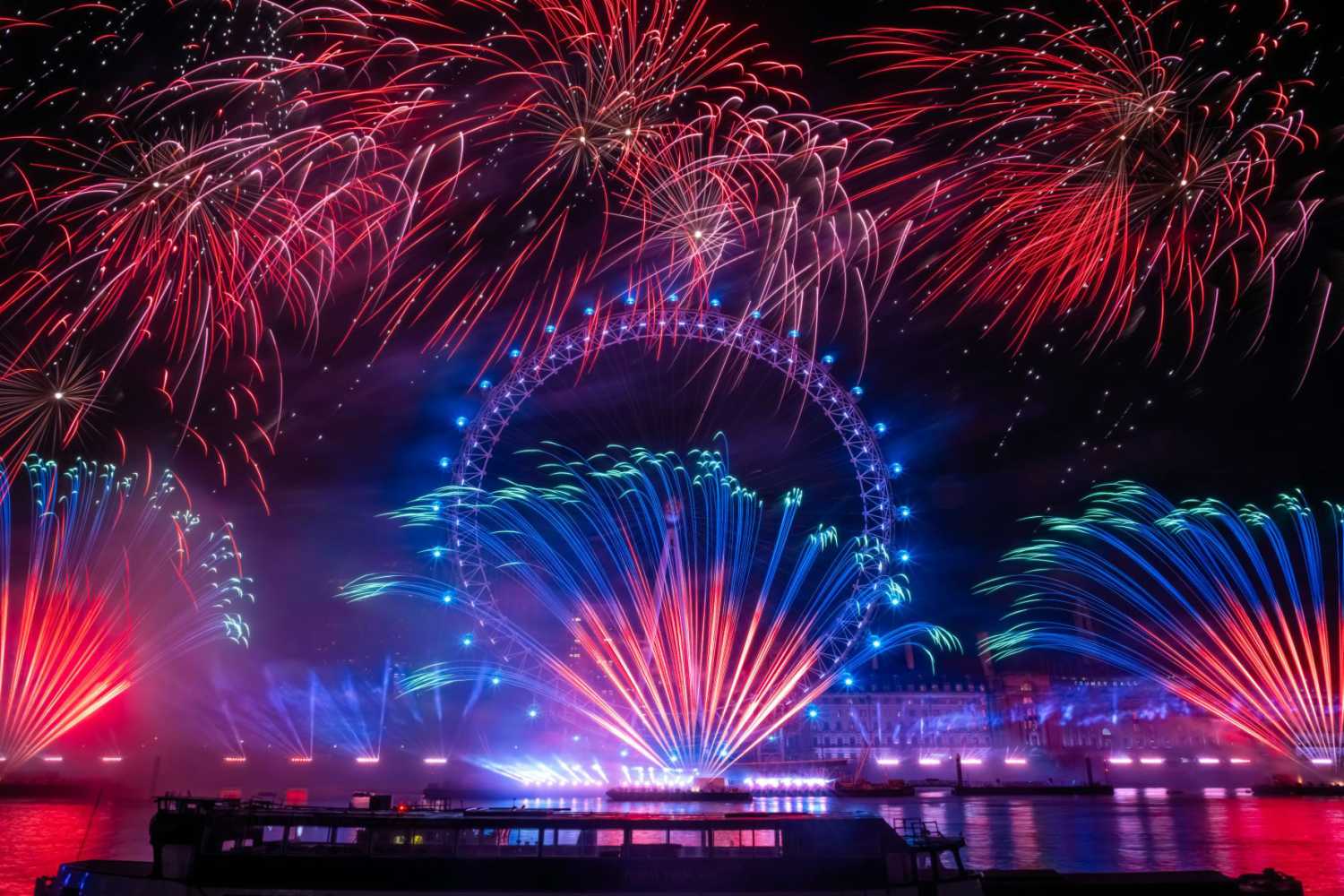AC-ET supplies ‘rock-solid’ wireless for NYE party
- Details

Produced by Identity, with creative direction from Dan Colbourne and David Zolkwer, the celebrations included an enormous fireworks display, along with a drone light show and a large-scale lighting spectacle created by lighting designer Tim Routledge. With the television cameras in mind, Routledge knew he needed powerful lighting fixtures inside each of the London Eye’s 32 pods to provide the visual ‘punch’ required, and chose Elation’s new Proteus Excalibur beam moving heads for the job. He also knew that the luminaires would have to be controlled wirelessly, as this would be the only way of sending control data to each pod.
Neg Earth Lights, with help from AC-ET’s Jack Moorhouse, began looking at LumenRadio’s latest wireless DMX control products back in September, with a series of demos set up by AC-ET at Neg Earth’s London headquarters. After encouraging results, followed by successful site tests, the team was confident that the LumenRadio systems would ensure the reliability required for such a high-profile event. The order was placed for three CRMX Stardust and 34 CRMX Aurora units, along with the required antennas. For the actual event, 12dbi outdoor directional antennas were used on the Stardust transmitters and 5dbi omni antennas on the Aurora receivers.
The moving head fixtures, each accompanied by a powerful strobe light and an Aurora receiver, were loaded onto dollies to be quickly wheeled into the pods of the London Eye – which continued to revolve. “The wheel doesn’t stop turning,” said Moorhouse. “You have about 60 seconds to get in and get out before the next pod comes along. So there’s limited opportunity to troubleshoot or adjust the receivers – it needs to load in and simply work!”
LumenRadio’s powerful new CRMX Stardust units offer transmission of eight universes of DMX/RDM, with an enhanced radio design giving record-breaking operational ranges on all eight universes simultaneously. The CRMX Aurora units, meanwhile, can send or receive one universe of DMX/RDM. Both units can be quickly configured locally via their colour screen, or via the CRMX Toolbox App, through which users can quickly identify all Bluetooth-enabled CRMX products, check battery status, conduct firmware updates, toggle between receiver and transmitter mode, change output power and much more.
Programming was carried out over three nights, with the dollies being moved into the pods every evening and out again every morning. The RDM facility of the CRMX units was used to monitor the signal strength of the lighting network.
Neg Earth Lights’ crew included project manager Damien Jackson and technical solutions manager Joao Magalhaes, assisted on site by Jamie Hiles. Magalhaes commented, “‘New Year's Eve, Wireless and no Latency’ were our bold lines for this project. We were looking for a product to deliver a 360° service from support to implementation, and in LumenRadio we’ve seen a partner to embrace this challenge. The CRMX Stardust and Aurora transceivers were a faultless system, with the extreme signal strength, the easy setup workflow, and the Linking Key option, which is very useful for devices to join the network quickly, offering redundancy capability if needed.”
He added, “Jack Moorhouse from A.C. Entertainment Technologies has helped and supported us from the beginning, backed by the LumenRadio development team. We’re happy to have LumenRadio in our toolset and we’re confident this will deliver on the most challenging projects.”
Lighting designer Tim Routledge was also pleased with the performance of the LumenRadio link, commenting, “The wireless system was rock-solid. We wanted a beat-perfect programmed show, so hits and accents needed to be perfect. We had 100,000 people with mobile phones nearby, and the system did not let us down."
















